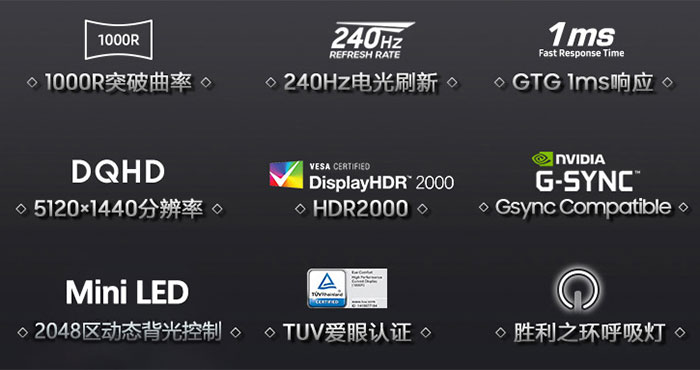Samsung is teasing the unveiling of its Odyssey Neo G9 gaming monitor on 29th July. This will be the successor to the already desirable Samsung Odyssey G9, with cutting edge tech additions that will elevate it to "revolutionize the gaming experience".
Above you can see Samsung's teaser trailer for the Odyssey Neo G9 gaming monitor. We might already know many of the key specs, though, from a premature listing by a Chinese online retailer, as we reported back in April this year. Samsung says that it is building the Odyssey Neo G9 with "cutting-edge technology," for "best-in-class," performance and many of these technologies were highlighted by a listing at Taobao, as you can see below.

The major change is with the transition from a 49-inch QLED panel to a new Quantum Dot infused Mini LED one. Some basic characteristics remain the same (a 32:9 ultrawide screen with 5,120 x 1,440 pixels resolution, 1000R curvature, 1ms response time, 240Hz max refresh rate) but the upgrade to Mini LED means a major upgrade in the display panel's brightness / contrast capability – and delivers an uplift from VESA DisplayHDR 600 to DisplayHDR 2000. Its HDR performance should be much better.
With the panel upgrade, the pricing isn't so nice, unfortunately, with the China leaked price of the new model being more than double the regular Odyssey G9. Perhaps this is why the new model is named the 'Neo' - as it will exist alongside the more affordable 'regular' QLED model, so as not to leave too big a gap in the market. I hope Samsung shares some pricing info on 29th July.













